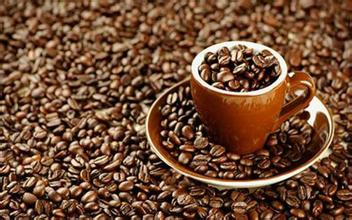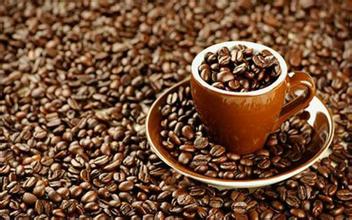What's the difference between a latte and a mocha?
Latte, also known as Caffè Latte, is one of many Italian lattes, because latte means fresh milk in Italian, so if you are in Italy, remember not to just say you want a Latte to the coffee shop clerk, or you will get suspicious eyes and a glass of fresh milk. In English, Latte is short for Coffee Latte, which refers to coffee brewed with hot milk. The French word lait is synonymous with the Italian word latte, both referring to milk. Caffè Latte, or coffee with milk, is often transliterated as "latte" or even "latte" or "nati." Cafe au Lait means coffee and milk, and is commonly referred to as Cafe au Lait or Cafe au Lait.
Italian latte

Ole coffee album
Caffè Latte requires a small Espresso (Italian word for coffee) and a glass of milk (150 - 200 ml), which is very different from Cappuccino. Latte coffee is extremely simple to make, just pour the milk into the freshly made espresso. In fact, there are no fixed rules on how much milk is added, and it can be freely mixed according to personal taste.
If you add some frothy cold milk to hot coffee, you get an American latte. Starbucks 'American latte is made in this way, with espresso at the bottom, milk heated to 60 - 65 degrees Celsius in the middle, and a layer of cold milk foam no more than half a centimeter at the end.
If you don't heat the milk, but garnish it with two tablespoons of milk foam, you have what Italians call Espresso Macchiato.
Oulei Coffee
Ole coffee can be thought of as a European latte, unlike American lattes and lattes.
Ole coffee is also very simple to make, is a cup of espresso and a large cup of hot milk into a large cup at the same time, and finally put two spoonfuls of whipped cream on the surface of the liquid.

latte
The biggest difference between Ole coffee and American latte and Italian latte is that it requires milk and espresso to be injected into the cup together. Milk and coffee meet at the first time, and the collision is a relaxed and free mood.
The French are the most enthusiastic supporters of Oulei coffee. You will see the round Oulei cup on the French breakfast table, which is the source of their good mood for the day.
Interestingly, compared to all coffee cups, it is possible that the French use the largest cup for their Ole coffee.
caramel latte
Caramel color is also known as caramel, commonly known as brown color, English Caramel, German known as "karamellzucker"(karamellzucker), French known as "sukeli, karamelise"(sucrecaramelise). Caramel is a natural colorant widely used in food and an important member of food additives. Caramel is a concentrated sugar extracted from sugar. Usually used for puddings/lattes. The color is almost coffee. it is prepare from food grade saccharide such as glucose, fructose, sucrose, invert sugar, maltose syrup, corn syrup, molasses, starch hydrolysate, etc. by heat (or pressurizing) at high temperature above 121 deg. C for coking, and further processing.
1. Caramel: Prepared by heating with or without an acid or base, but without ammonium or sulfite compounds. The acids used may be food grade sulfuric acid, sulfurous acid, phosphoric acid, acetic acid and citric acid. The alkali used may be sodium hydroxide, potassium hydroxide or calcium hydroxide.
2. Caramel: Caramel prepared by heating in the presence of sulfites, with or without acid or base, but without ammonium compounds.
3. Caramel: Caramel prepared by heating in the presence of ammonium compounds, with or without acid or base, but without the use of sulfites.

Take the book
4. Ammonium sulfite caramel:
prepared by heating with or without acid or base in the presence of both sulfite and ammonium compounds.
Latte is the most familiar Italian coffee item. It's a fancy coffee in a thick, rich ESPRESSO with equal proportions or even more milk. With the warm seasoning of milk, the original sweet and bitter coffee becomes soft, sweet and rich. Even those who are not used to drinking coffee can hardly match the taste of latte. Like cappuccino, latte is good for morning drinking because it contains lots of milk. Italians also like it to warm their stomachs and go with breakfast. Many people do not understand the relationship between latte and oulei. In fact, latte is Italian coffee with milk, which is steamed by machine steam, while oulei is French coffee. They boil milk with fire, and the taste is warm and smooth.
Practice: Use tools and materials.
Deep roast coffee beans in moderation.
Appropriate amount of milk (coffee\fresh milk ratio: 1:1)
1. Soak the cup in hot water (warm cup) to raise its temperature, and then pour out excess water for use.
2. After grinding the deeply roasted coffee beans, pour the coffee powder into the filler, flatten the coffee powder with a press bar, and then lock the filler into the espresso machine extraction port to extract ESPRESSO (coffee\fresh milk ratio is 1:1).
3. Take the right amount of milk and place it under the steam nozzle of the espresso machine to steam it into hot milk.
4. Pour the steamed milk into a glass.
5. Shake the glass up and down to make the foam rise.
6. Finally, slowly pour ESPRESSO into the cup.
Latte is characterized by a stronger taste of milk than coffee, so it must be more than 1/2 milk.
For this information refer to Wikipedia "caramel latte".
Important Notice :
前街咖啡 FrontStreet Coffee has moved to new addredd:
FrontStreet Coffee Address: 315,Donghua East Road,GuangZhou
Tel:020 38364473
- Prev

Noble caramel instant coffee caramel coffee price caramel coffee premium caramel coffee
Caramel Coffee Editor "Caramel Coffee" is from the girl's second album "oh".
- Next

Cappuccino, latte, what's the difference? talk about the difference between cappuccino and latte.
Cappuccino and latte belong to milk coffee, the main difference is the ratio of espresso, milk and milk foam. The proportion of espresso, hot milk and milk foam: according to the traditional method, if you make a cappuccino, the amount of espresso, hot milk and milk foam should be the same (1:1:1), while if you make a latte, the score of hot milk
Related
- Does Rose Summer choose Blue, Green or Red? Detailed explanation of Rose Summer Coffee plots and Classification in Panamanian Jade Manor
- What is the difference between the origin, producing area, processing plant, cooperative and manor of coffee beans?
- How fine does the espresso powder fit? how to grind the espresso?
- Sca coffee roasting degree color card coffee roasting degree 8 roasting color values what do you mean?
- The practice of lattes: how to make lattes at home
- Introduction to Indonesian Fine Coffee beans-- Java Coffee producing area of Indonesian Arabica Coffee
- How much will the flavor of light and medium roasted rose summer be expressed? What baking level is rose summer suitable for?
- Introduction to the characteristics of washing, sun-drying or wet-planing coffee commonly used in Mantenin, Indonesia
- Price characteristics of Arabica Coffee Bean Starbucks introduction to Manning Coffee Bean Taste producing area Variety Manor
- What is the authentic Yega flavor? What are the flavor characteristics of the really excellent Yejasuffi coffee beans?

